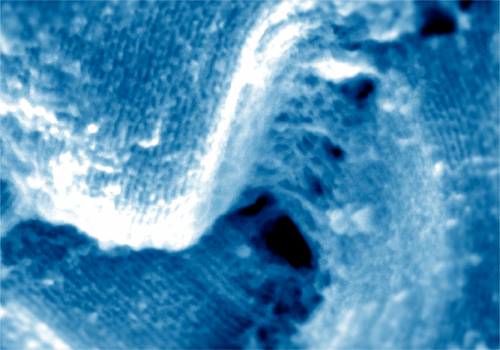当前位置:
X-MOL 学术
›
Acc. Chem. Res.
›
论文详情
Our official English website, www.x-mol.net, welcomes your
feedback! (Note: you will need to create a separate account there.)
Rational Design of Semiconductor Nanostructures for Functional Subcellular Interfaces
Accounts of Chemical Research ( IF 16.4 ) Pub Date : 2018-04-18 00:00:00 , DOI: 10.1021/acs.accounts.7b00555 Ramya Parameswaran 1, 2 , Bozhi Tian 3, 4, 5
Accounts of Chemical Research ( IF 16.4 ) Pub Date : 2018-04-18 00:00:00 , DOI: 10.1021/acs.accounts.7b00555 Ramya Parameswaran 1, 2 , Bozhi Tian 3, 4, 5
Affiliation

|
One of the fundamental questions guiding research in the biological sciences is how cellular systems process complex physical and environmental cues and communicate with each other across multiple length scales. Importantly, aberrant signal processing in these systems can lead to diseases that can have devastating impacts on human lives. Biophysical studies in the past several decades have demonstrated that cells can respond to not only biochemical cues but also mechanical and electrical ones. Thus, the development of new materials that can both sense and modulate all of these pathways is necessary. Semiconducting nanostructures are an emerging class of discovery platforms and tools that can push the limits of our ability to modulate and sense biological behaviors for both fundamental research and clinical applications. These materials are of particular interest for interfacing with cellular systems due to their matched dimension with subcellular components (e.g., cytoskeletal filaments), and easily tunable properties in the electrical, optical and mechanical regimes. Rational design via traditional or new approaches, such as nanocasting and mesoscale chemical lithography, can allow us to control micro- and nanoscale features in nanowires to achieve new biointerfaces. Both processes endogenous to the target cell and properties of the material surface dictate the character of these interfaces.
中文翻译:

功能性亚细胞界面半导体纳米结构的合理设计
指导生物科学研究的基本问题之一是细胞系统如何处理复杂的物理和环境线索并在多个长度尺度上相互通信。重要的是,这些系统中的异常信号处理可能导致疾病,对人类生命造成毁灭性影响。过去几十年的生物物理学研究表明,细胞不仅可以对生化信号做出反应,还可以对机械和电信号做出反应。因此,开发能够感知和调节所有这些途径的新材料是必要的。半导体纳米结构是一类新兴的发现平台和工具,可以突破我们在基础研究和临床应用中调节和感知生物行为的能力极限。这些材料由于其与亚细胞成分(例如细胞骨架丝)尺寸匹配,并且在电学、光学和机械方面易于调节的特性,因此对于与细胞系统连接特别感兴趣。通过传统或新方法(例如纳米铸造和介观化学光刻)的合理设计可以使我们控制纳米线中的微米和纳米级特征,以实现新的生物界面。靶细胞的内源性过程和材料表面的特性决定了这些界面的特征。
更新日期:2018-04-18
中文翻译:

功能性亚细胞界面半导体纳米结构的合理设计
指导生物科学研究的基本问题之一是细胞系统如何处理复杂的物理和环境线索并在多个长度尺度上相互通信。重要的是,这些系统中的异常信号处理可能导致疾病,对人类生命造成毁灭性影响。过去几十年的生物物理学研究表明,细胞不仅可以对生化信号做出反应,还可以对机械和电信号做出反应。因此,开发能够感知和调节所有这些途径的新材料是必要的。半导体纳米结构是一类新兴的发现平台和工具,可以突破我们在基础研究和临床应用中调节和感知生物行为的能力极限。这些材料由于其与亚细胞成分(例如细胞骨架丝)尺寸匹配,并且在电学、光学和机械方面易于调节的特性,因此对于与细胞系统连接特别感兴趣。通过传统或新方法(例如纳米铸造和介观化学光刻)的合理设计可以使我们控制纳米线中的微米和纳米级特征,以实现新的生物界面。靶细胞的内源性过程和材料表面的特性决定了这些界面的特征。









































 京公网安备 11010802027423号
京公网安备 11010802027423号